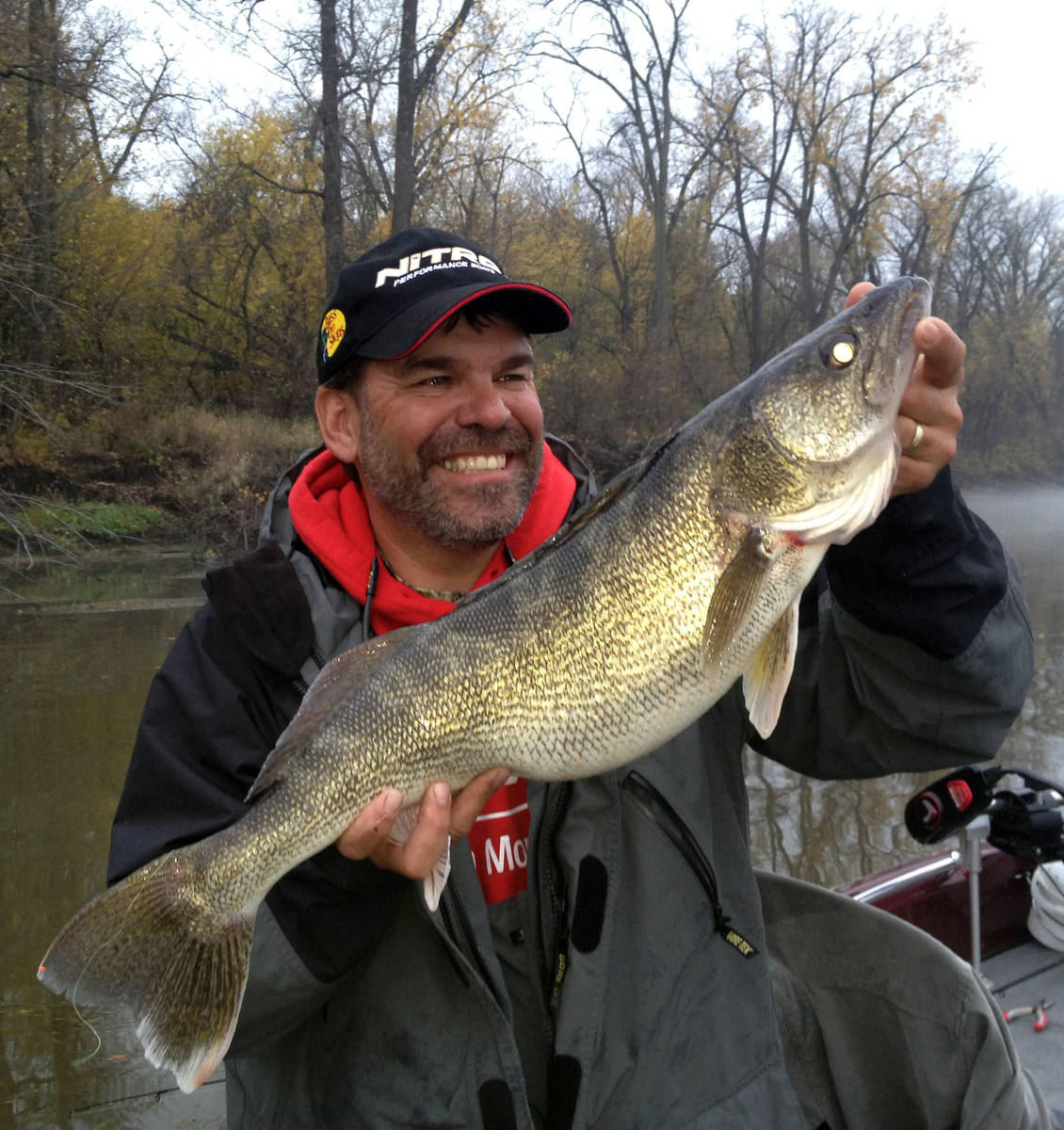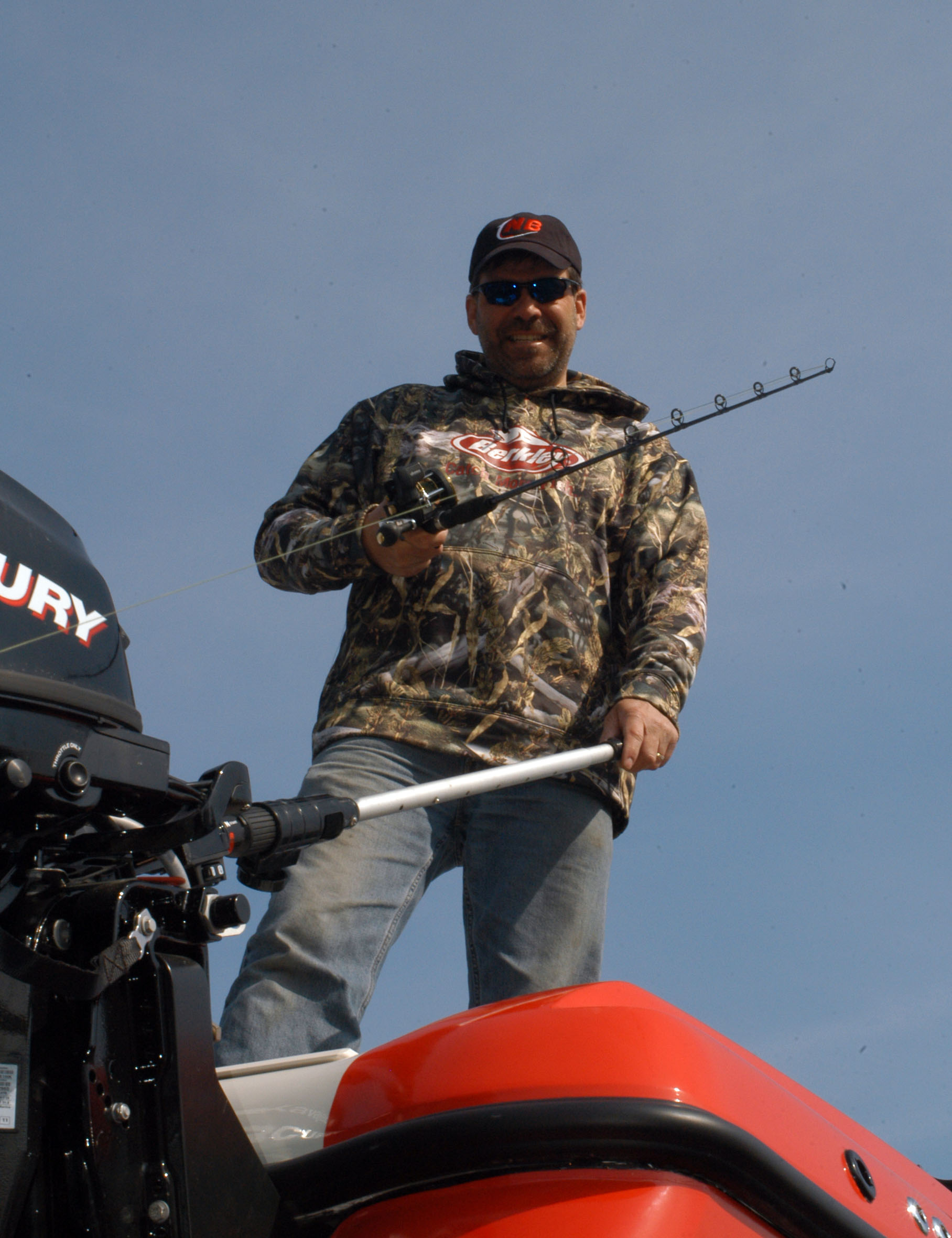Walleye fishing on a river in the spring is one thing; fishing that same river when its flowing with heavy current from massive snow melt and/or torrential spring rains is something all together different. Not only is the current speed an issue, but the water is muddied up, there’s debris floating downstream everywhere, and as the river level rises, walleyes suddenly have locational options they would not normally have.
 Conditions like this are not normally very conducive to great walleye fishing! While you might think the solution would be to simply look for areas of reduced current, the problem is that’s not necessarily where the fish are. Even though the current may be ripping on the surface, walleyes are still able to find little nooks and crannies along the bottom where they can sit out of the current, darting out to grab a quick meal as the current sweeps it by. If the fish’s best chance for a meal is in the heavy current, that’s where most of the fish will be. If you want to catch them, this is where you need to fish – but it’s not easy.
Conditions like this are not normally very conducive to great walleye fishing! While you might think the solution would be to simply look for areas of reduced current, the problem is that’s not necessarily where the fish are. Even though the current may be ripping on the surface, walleyes are still able to find little nooks and crannies along the bottom where they can sit out of the current, darting out to grab a quick meal as the current sweeps it by. If the fish’s best chance for a meal is in the heavy current, that’s where most of the fish will be. If you want to catch them, this is where you need to fish – but it’s not easy.
So how do you tackle this scenario when walleyes are in these “not-so-easy to fish” areas of the river – not accessible by “conventional” river tactics like vertical jigging? There are a few tried-and-true techniques for fishing walleyes in heavy current, realizing that although this situation isn’t always the easiest fishing in the world … it can be the best walleye fishing available.
The key to any tactic that is successful in heavy current is that it gives the angler control and keeps the bait near the bottom. That means the use of heavy weights … the stronger the current you’re fishing, the heavier the weight you’ll need to control the presentation. You also want a presentation that allows you to “Cover and Hover” … that is to cover water, either by moving upstream, slipping downstream and even sliding cross-stream searching for these isolated spots that are holding the walleyes.
The most popular technique for fishing heavy current is what’s known as 3-way Rigging. The rig starts with a 3-way swivel tied to a main line of 10 pound test Berkley FireLine. The FireLine is nice because it maximizes feel and its small diameter cuts the current better than monofilament. To the second leg of the swivel tie a twelve inch piece of 6 pound test mono with a bell sinker at the end. Weights will vary from about 1 to 3 ounces depending on the amount of current and weight needed to keep bottom contact. Think of this much the same as you would bottom bouncer fishing … you want to keep the rig at about a 45 degree angle from the rod tip to the bottom … this will give you the best feel and control. You might be tempted to use a bouncer to simplify rigging, but the added bulk of a bouncer tends to catch too much current and is not as effective as the 3-way rig.
At the business end of the 3-way, run a 3 foot leader of 10 pound test mono (or another good choice would be Berkley Trilene 100% Professional Grade Fluorocarbon) to your bait of choice. There are several good lure options for 3-ways ranging from small floating crankbaits to streamer flies. One rig that has been very successful over the years is called a “D-Rig” or Dubuque Rig, popularized on the Mississippi River. It consists of a #2 Aberdeen hook dressed with a three inch twister tail style grub like a Berkley Power Grub or a GULP Minnow Grub in high-visibility colors like chartreuse, white, orange or yellow, and tipped with a small minnow or half a nightcrawler. You can also add a red bead just ahead of the hook for added color. The nice thing here is that while swimming in the current, the Berkley tail is thumping along creating vibration, with plenty of fish attracting color and is dispersing a scent trail… so there’s a lot of attraction to entice the fish.
 While 3-ways will handle most heavy current situations, there are times an even heavier approach is needed. Anglers on the Detroit River between Lake St. Clair and Lake Erie deal with extremely heavy current but using a tactic known as Handlining. While very effective, Handlining requires some very specialized equipment and if you are only dealing with heavy current on an occasional basis, there are other options.
While 3-ways will handle most heavy current situations, there are times an even heavier approach is needed. Anglers on the Detroit River between Lake St. Clair and Lake Erie deal with extremely heavy current but using a tactic known as Handlining. While very effective, Handlining requires some very specialized equipment and if you are only dealing with heavy current on an occasional basis, there are other options.
A variation of the Handline that many anglers now starting to use is a technique called Rod-Lining. Here, the use of a short, heavy-action rod is used in place of the bare hand and a Handlining rig. We use the Bass Pro Shops Muskie Angler Rod, model GSM63XHT (a 6’3” Extra Heavy Muskie Rod) with a reel spooled with 30 pound test FireLine. With this rig, we’ll use weights from six to eight ounces, and rig this much like the Handlining set-up, using two 3-way swivels about a foot apart above the weight to run the leaders off of. The common set up would be to run a leader of 5 to 10 feet of 20 pound test Fluorocarbon from the lowest 3-way swivel (about 12 inches up from the weight) and then another leader twice the length of the first one off the next swivel. The lures most often used with this tactic are flutter spoons and shallow running minnow-style crankbaits. The heavy leaders are an advantage for two reasons … tangles do occasionally occur and the heavier line is easier to untangle, and if you do snag the lure, you can usually pull the lure free by straightening the hook out a bit.
Because you are dealing with long leaders, it’s imperative you use long-handled nets to land the fish. The EGO model 72050 with the optional extension handle model H72007( that extends from 48 inches all the way to 108 inches) is one we have been using a couple seasons now and are very happy with its ease of use and durability.
Keep in mind too that it doesn’t just have to be rain and run-off that creates a heavy current situation. There are plenty of rivers that run fast on an ordinary day or areas of an otherwise meandering river that exhibit “heavy current” characteristics caused by things like wing dams, narrows or just because it happens to be a fast stretch of river. So when the walleyes in your river aren’t in the “easy” water, look for them in the heavy current and use some heavy-metal tactics to get your Next Bite.










